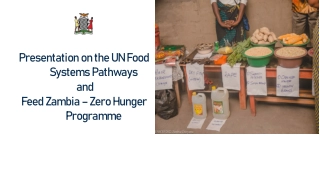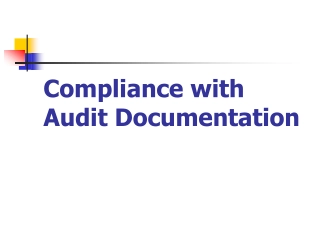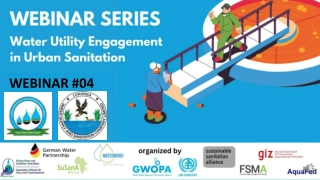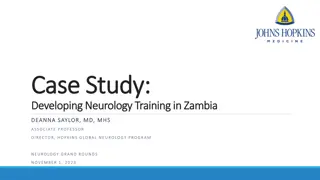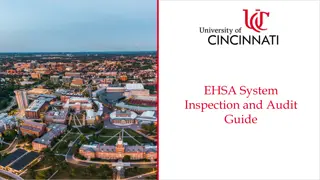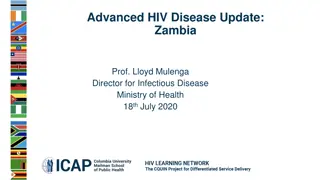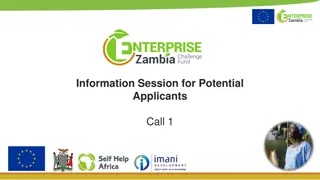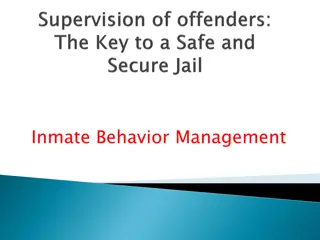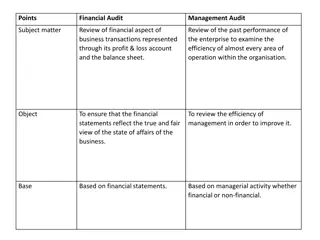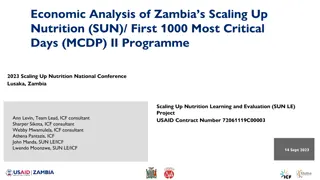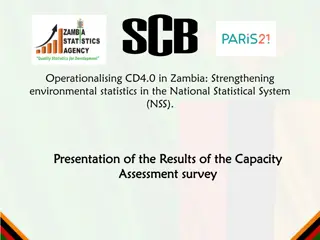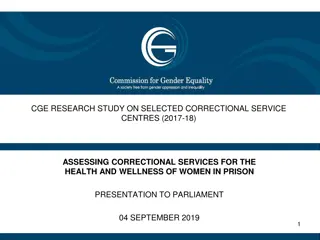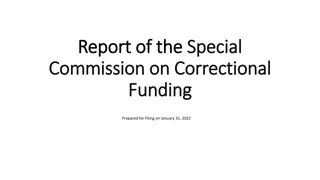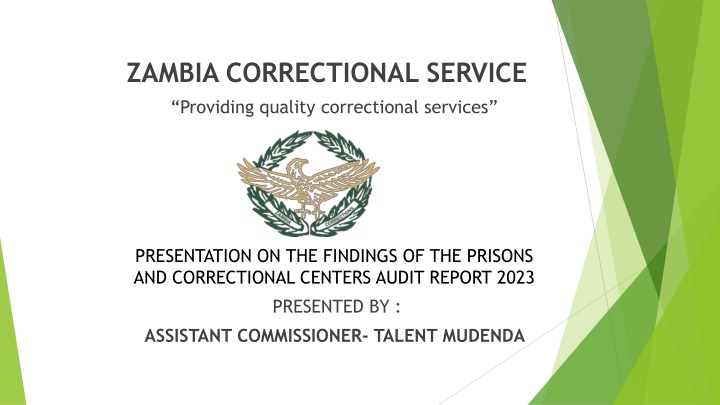
Zambia Correctional Service Audit Report 2023 Findings
The Zambia Correctional Service is dedicated to providing quality correctional services. Explore the key findings from the prisons and correctional centers audit report of 2023, highlighting challenges and improvements in managing these facilities. Learn about the legal framework, objectives, and mission of the service in ensuring humane custody and reformation of inmates.
Download Presentation

Please find below an Image/Link to download the presentation.
The content on the website is provided AS IS for your information and personal use only. It may not be sold, licensed, or shared on other websites without obtaining consent from the author. If you encounter any issues during the download, it is possible that the publisher has removed the file from their server.
You are allowed to download the files provided on this website for personal or commercial use, subject to the condition that they are used lawfully. All files are the property of their respective owners.
The content on the website is provided AS IS for your information and personal use only. It may not be sold, licensed, or shared on other websites without obtaining consent from the author.
E N D
Presentation Transcript
ZAMBIA CORRECTIONAL SERVICE Providing quality correctional services PRESENTATION ON THE FINDINGS OF THE PRISONS AND CORRECTIONAL CENTERS AUDIT REPORT 2023 PRESENTED BY : ASSISTANT COMMISSIONER- TALENT MUDENDA
INTRODUCTION The Zambia Correctional Service is established under Article 193(1) of the Constitution of Zambia and is governed by the Corrections Act No. 37 of 2021 of the Laws of Zambia. Mandated to manage, regulate and ensure the security of Prisons and Correctional centres as well as to perform other functions as prescribed. Article 193(4) Mission Statement To provide humane custody and correctional services for maintaining community safety and reformation of inmates.
1.3 Objectives provide safe custody of inmates lodged in prisons and correctional centres; provide correctional services to inmates; and enhance the welfare of inmates. .
Legal framework The Zambia Correctional Service Act of 2021 (Act No. 37 of 2021), Repealed and replaced the Prisons Act CAP 97. The Act continues the existence of the former Zambia Prisons Service and renames it as Zambia Correctional Service. This name change reflects a shift towards a more rehabilitative approach to corrections, emphasizing the correction and reformation of inmates rather than mere punishment. It provides for management and control of prisons and correctional centres It establishes frameworks for rehabilitation programs such as education, vocational and skills training, and psychological support to inmates aimed at reducing recidivism and facilitating the reintegration of former inmates into society
It includes provisions for extension services, which advocate for the employment of inmates post-release and promote continuous education and healthcare. Domesticates the United Nations Standard Minimum Rules for the Treatment of Prisoners,(Mandela Rules) ensuring that Zambia's correctional practices align with international human rights standards.
THE PRISON AND CORRECTIONAL CENTRES AUDIT REPORT 2023 The 2023 audit report on Zambia's prisons and correctional centres highlights significant findings and challenges regarding the Prisons and Correctional Centres in Zambia as well as the management and control of these facilities. Condition of the
PURPOSE OF THE AUDIT To assess the following aspects: The conditions of Prisons and correctional centres. The extent of awareness and respect for inmates human rights in Correctional facilities. The challenges faced by inmates. The extent at which correctional services are implemented and realised following the enactment of the Zambia Correctional Service Act in 2021.
The conditions of correctional centres Accommodation Condition of the buildings or physical structures in which inmates are detained which includes: sleeping space Beds mattresses and beddings Condition Inadequate Inadequate Inadequate Ventilation Poor sitting space (benches, chairs etc) Inadequate dining halls; Inadequate( most centres have no designated dinning halls) toilets; showers and bathrooms. Kicthens Inadequate( few modern kitchens)
Extent of awareness and respect for inmates human rights in the Correctional centres. The Audit report s findings were that levels of awareness and respect for inmates human rights and freedoms in correctional centres are low. Most human rights and freedoms of inmates are violated Probably due to: ignorance, low levels of education, the mindset and perception that an inmate has no rights. Due to inadequate infrastructure inefficiencies and ineffectiveness in the justice system,
THE CHALLENGES FACED BY INMATES IN CORRECTIONAL CENTRES Apart from general challenges faced by inmates in correctional centres, there are other unique challenges faced by special or vulnerable groups of inmates. Meaning certain categories of inmates face greater challenges than others. These special or vulnerable groups include: women; persons with disabilities (PWDs); the elderly, Remandees; Children in conflict with law (juveniles); prohibited immigrants (PIs). Children in contact with law (circumstantial children)
FEMALE INMATES The Audit report found that there was: lack of infrastructure specifically designed for pregnant or female inmates with their children. Lack of worship centres for female inmates limited options for life skill sets compared to male inmates. While male inmates have access to various trades such as carpentry, mechanics, bricklaying, and farming, female inmates are often confined to sewing, which is sometimes dominated by men in most correctional centres. ELDERLY INMATES One major challenge is the lack of appropriate medical care and accommodation for age-related health conditions. The audit found that elderly inmates suffered from chronic illnesses such as hypertension, diabetes, and arthritis, which were exacerbated by the prison environment.
JUVENILES The audit findings showed that some juveniles shared cell rooms with adults, Are offered sub standard lessons due to inadequate infrastructure and limited number (or not qualified) of teachers. Lack of counselling while awaiting confirmation PERSONS WITH DISABILITIES The audit found that most correctional centres were not designed to accommodate the needs of persons with disabilities. REMANDEES The audit found that remandees rights to legal representation, speedy trial, access to health, access to bail and bond were highly infringed.
CIRCUMSTANTIAL CHILDREN These are Children found in a correctional center due to their mother s incarceration. The audit found that the conditions in which circumstantial children are held are such that they do have access to education, adequate sleeping space, sufficient meals and freedom to move around and play as they would if they were in a home environment. spend most of their time in the company of adults and not fellow children and this has an impact on their psychological and physical development. PROHIBITED IMMIGRANTS Most correctional centres did not have separate detention cells for PIs Communication challenges due to language barriers and poor support towards making international phone calls.
THE CHALLENGES FACED BY INMATES IN RELATION TO OTHER JUSTICE INSTITUTIONS The Audit report reveals that apart from general challenges faced by inmates in relations to correctional service, inmates also face challenges with the following institutions. The Police Take too long to investigate the matter Prolonged detention Accused not brought before Court within 48 hrs Missing dockets The National Prosecution Authority Adjournments: NPA are reported by inmates as being responsible for the adjournments at court. Delays in prosecution: Delays in committing the accused to the High Court or bringing witnesses during trial were partially attributed to the NPA s inefficiencies. Misplacement of documents
The Judiciary: Courts hardly grant bail leading to prolonged detention Low usage of diversion for children, resulting in young offenders being subject to regular court processes. Delays in committing matters to the High Court delays at the trial and sentencing stages, contributing to extended periods of incarceration Harsh bail conditions Missing court records: The Legal Aid Board LAB advocates are inaccessible: Lack of decentralisation of the LAB: The LAB has limited human resources.
EXTENT OF IMPLEMENTATION OF CORRECTIONAL SERVICES The audit found that 54% of the inmates have access to Rehabilitation centres where various programmes and services are provided to support their rehabilitation and reintegration into society. 52% of the inmates have observed a shift in the approach taken by correctional centres, which they now perceive to be more focused on correction and rehabilitation rather than punishment. 67% of the inmates are aware of the availability of counselling services within the correctional centres. These services aim to address their psychological and emotional needs, providing support during their incarceration. 56% of the inmates are aware of the rehabilitation programmes offered to them. These programs encompass various activities and interventions aimed at improving their skills, education and overall well-being to facilitate successful reintegration into society. Continued efforts are being made to provide necessary support and opportunities for inmates to rehabilitate and reintegrate into society effectively.
Overcrow ding in Zam bia C orrectional Service Facilities: The U nderlying C hallenge and Its Im pact on Inm ates R ights It must be noted that like the first audit which was conducted in 2009, 14 years later, the second audit also found overcrowding in correctional facilities to be the biggest challenge facing the ZCS. The report reveals that all the challenges identified in the first audit have persisted and are among those identified in the second audit. In addition, the second audit found that there were serious violations of inmates human rights, many of which were attributed to the problems of overcrowding and inadequate infrastructure
As evidenced by the findings of the prison audit report of 2023,Overcrowding in correctional facilities is a very big challenge faced by the Zambia Correctional Service . It is worth noting that the population of inmates in Zambia is in constant flux due to regular admissions and discharges on daily basis. As of today,16th September, 2023, the Zambia Correctional Services (ZCS) has a total of 27, 947 inmates against a holding capacity of 10 500. overcrowding manifests as a systemic issue that requires concerted efforts from all key players in the criminal justice system, namely: Zambia Police Service (ZPS) Judiciary National Legal Aid Board (LAB) National Prosecutions Authority (NPA) Drug Enforcement Commission (DEC) National Parole Board(NPB) Zambia Correctional Service (ZCS)
Overcrowding creates severe conditions that directly undermine inmates' rights and well-being, in the following ways: Inadequate Living Conditions: Overcrowded cells lead to inmates sharing small spaces with insufficient ventilation, sanitation, and basic amenities. This environment is a direct violation of their right to humane living conditions. Limited Access to Health Services: Overcrowding strains the capacity of health personnel in correctional facilities, limiting inmates' access to medical care and increasing the risk of infectious disease outbreaks, such as tuberculosis. Diminished Rehabilitation Efforts: With the facilities overwhelmed by the number of inmates, the Correctional Service is unable to effectively provide rehabilitation programs that would help reintegrate offenders back into society. Instead, the environment fosters recidivism rather than rehabilitation. Strain on Correctional Officers: Overworked and overwhelmed staff can find it difficult to maintain discipline and order, which in turn compromises inmates' safety and security. In essence, overcrowding violates the inmates' fundamental rights to human dignity, health, and personal development.
THE ZAMBIA CORRECTIONAL SERVICE: AT THE RECEIVING END IN THE CRIMINAL JUSTICE SYSTEM It is important to understand that the Zambia Correctional Service is at the receiving end of the criminal justice system. The Service's role is to provide custodial and rehabilitative services to inmates once they have been convicted or placed on remand. This places the Service in a reactive position, with little control over the number of inmates entering its facilities. The inflow of inmates is determined by other key players within the criminal justice system, specifically the following:
The Police: which arrest suspects and remand them in custody. The National Prosecution Authority: which decides who gets prosecuted. The Judiciary: Which determines sentences and whether to grant bail. The Legal Aid Board: Which represents indigent defendants, many of whom might remain in custody for extended periods awaiting trial. Given this structure, overcrowding cannot be tackled by the Zambia Correctional Service alone. A collaborative and systemic approach is required, involving all actors in the justice system.
THE ROLE OF OTHER CRIMINAL JUSTICE ACTORS IN ADDRESSING OVERCROWDING The Zambia Police Service The Zambia Police plays a critical role in reducing the number of individuals entering correctional facilities. Through effective use of bail bond and diverting minor offenders to non-custodial alternatives, the police can help reduce the number of detainees awaiting trial. The National Prosecution Authority (NPA) The NPA is responsible for prosecuting criminal cases. Delays in prosecution or pursuing minor offenses that could be dealt with through alternatives to incarceration contribute significantly to overcrowding. NPA should Promote alternatives to prosecution for petty offenses,thereby reducing the number of people in pre-trial detention.
The Judiciary The Judiciary plays a vital role in determining the fate of the accused. Courts should consider options such as non-custodial sentences or probation, for minor offenses, rather than automatically opting for incarceration. Courts to priotize the use of probation for first-time and non-violent offenders to reduce the prison population. The Legal Aid Board Many inmates remain in custody simply because they cannot afford legal representation or bail. The Legal Aid Board plays a key role in ensuring access to justice for the indigent, particularly for individuals who may not need to be held in custody for minor offenses. Advocate for more pre-trial releases, especially for minor or non-violent offenders.
TOWARD A SUSTAINABLE SOLUTION: A COORDINATED APPROACH To tackle the issue of overcrowding in Zambia s correctional facilities, a coordinated approach across all levels of the criminal justice system is required. The following steps are essential: Legal and Policy Reform: A review of existing laws, particularly those related to bail, sentencing, and remand, is necessary to reduce the inflow of inmates into correctional facilities. Infrastructure development : Increasing the capacity of correctional facilities, including expanding infrastructure, is critical in the short term. However, this must go hand-in-hand with reducing the overall inflow of inmates. Public Awareness: Educating the public and stakeholders in the justice system about the alternatives to incarceration and the rights of inmates is essential for changing perceptions and promoting reform. Cross-Sector Collaboration: Strengthening coordination between the police, judiciary, prosecution, and correctional services to streamline the process from arrest to sentencing will alleviate the burden on correctional facilities
EFFORTS BY THE ZAMBIA CORRECTIONAL SERVICE TO ADDRESS OVERCROWDING AND IMPROVE THE CONDITIONS OF CORRECTIONAL CENTRES The Zambia Correctional Service (ZCS) acknowledges the findings and recommendations outlined in the 2023 Audit Report on prisons and correctional centers. The report highlights critical issues, including overcrowding and inadequate conditions, which ZCS is committed to address through various initiatives. The ZCS recognizes the urgent need to improve the living conditions of inmates and ensure their rights are upheld. The audit report's revelations about overcrowding and the treatment of inmates have prompted the ZCS to take decisive action to enhance the environment within correctional facilities. In response to the audit findings, the ZCS has implemented several measures aimed at decongesting facilities and improving inmate welfare as follows:
Infrastructure Development: Construction of New Correctional centres built-The completion of the 1,800 holding capacity Mwembeshi Correctional Remand centre comprised of four sections ( male,female,Juveniles and PIs) which will allow for the transfer of inmates from overcrowded centers, significantly alleviating congestion. Establishment of more open air farms-This includes the establishment of five commercialized new Open Air farms namely Mwomboshi, Luena, Lubo, Kalungwishi and Mibanga which have been acquired and earmarked to be developed so as to address overcrowding. These farms, will also serve as a means of rehabilitation for inmates.
Legal Aid Services: Through collaboration with various stakeholders, Legal Aid Desks have been established in selected correctional facilities to provide inmates with access to legal services, thereby reducing the duration of pre-trial detentions. Collaboration with Law Association of Zambia on the project called Prison decongestion project Law reforms: ZCS is currently reviewing the Parole Rules so as to enhance eligibility criteria for parole release of inmates, which will further contribute to the reduction of overcrowding. Community Engagement: The ZCS is collaborating with Civil Society organizations and various stakeholders to promote the reintegration of released inmates, ensuring they have support and resources to avoid recidivism.
ADDRESSING PRISONS AND CORRECTIONAL CENTRES CONDITIONS
Procurement of Essential Supplies: The ZCS has procured 50,000 blankets and 25,000 mattresses to ensure that inmates have adequate bedding. Additionally, materials for producing bunk beds are being utilized to enhance sleeping arrangements. Agricultural and Industrial Initiatives: The ZCS is commercializing agricultural activities within correctional facilities to generate income and improve food security and diet for inmates. Training and Capacity Building: Ongoing training programs for correctional officers focus on improving service delivery and ensuring humane treatment of inmates, aligning with international standards for the treatment of prisoners. Expectant mothers and Circumstantial Children: The new gazette Diana Nalupya Center for female inmates with circumstantial children which was gazetted on 2nd August, 2024 has been handed over to Zambia Correctional Service and is yet to be operationalized in 2025. Provision of special budget for Expectant Mothers and children :to address their special needs.
COLLABORATION WITH STAKEHOLDERS In an effort to supplement Government efforts, a number of stakeholders have come on board to collaborate with ZCS in providing support in various programs so as to address the challenges faced by inmates In an effort to supplement Government efforts, a number of stakeholders have stepped forward to collaborate with the Zambia Correctional Service (ZCS), offering support across various programs. This collective approach aims to address the diverse challenges faced by inmates, enhancing their rehabilitation and reintegration into society. However, there is still much to be done, and we call upon more stakeholders to join us in this important mission. By working together, we can ensure that the correctional system is better equipped to transform lives and create lasting positive change."
CONCLUSION Overcrowding in Zambia s correctional facilities is a serious issue with far-reaching consequences for both inmates and society at large. As the Zambia Correctional Service is merely at the receiving end of individuals processed by other arms of the criminal justice system, tackling the challenges faced by ZCS requires concerted efforts from all stakeholders. As we strive to uphold the principles of justice and human dignity, it is imperative that we work together to reform the correctional system in Zambia.

